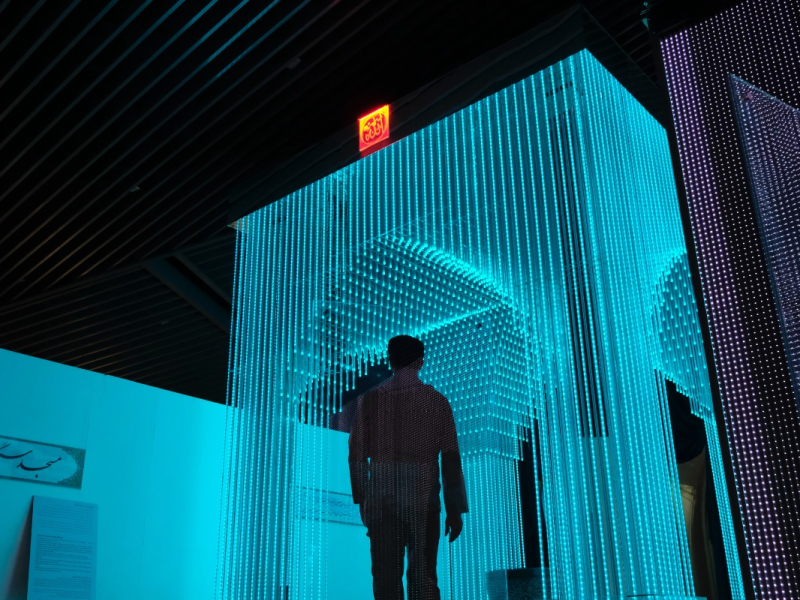Organizations are realizing that it’s no longer enough to focus solely on individual branded artifacts; instead, a comprehensive approach to designing the entire end-to-end customer experience is crucial. This includes considering all customer interactions, from using a mobile app to speaking with customer service.
The significance of experience design in building brand loyalty
Today’s consumers have a plethora of choices, and they’ve become quite discerning. Their expectations are soaring. What truly makes a difference is the overall experience. Companies understand that building brand loyalty and keeping customers comes down to creating exceptional and personalized experiences.
Experience design goes beyond looks and surface-level improvements. It’s a comprehensive approach that covers every part of a customer’s journey. From the first interaction to post-purchase engagement, each touchpoint must be thoughtfully designed to align with the customer’s needs and preferences. This careful orchestration of interactions distinguishes industry leaders from those that fall behind.
A critical aspect of this shift toward prioritizing experience design is recognizing that the customer journey is not a straightforward path. It’s a fluid, often unpredictable process. Customers move effortlessly between online and offline touchpoints, so companies need consistency and smooth transitions. Any inconsistencies or gaps in the customer journey can lead to frustration and, ultimately, losing customers.
Factors to consider to meet user expectations
The digital world can be pretty unforgiving. Unlike in the real world, where people might tolerate small inconveniences, digital interactions come with sky-high expectations. Users want things to be smooth, easy to understand, and super quick. If they encounter even a tiny glitch or a clunky interface, they won’t hesitate to bail, and that can seriously hurt a brand’s reputation.
Impact on revenue
Word-of-mouth marketing is quite powerful; it can make a brand’s influence stretch way beyond what the marketing budget could achieve.
When customers have good experiences, they tend to be more understanding when there are occasional hiccups or price differences. They focus on the overall experience rather than getting hung up on isolated incidents. This willingness to forgive and stick with a brand helps shield the company from getting dragged into intense price wars that often trap competitors. Essentially, a strong emphasis on customer experience acts as a defense against turning products or services into mere commodities.
Companies that ignore or underestimate the importance of customer experience often end up dealing with a swarm of dissatisfied and departing customers. The erosion of trust and loyalty directly impacts revenue. Unhappy customers not only stop using a company’s services but are also quite likely to spread their negative experiences, causing harm to the brand’s reputation. This negative word-of-mouth can create a ripple effect, scaring away potential customers and hindering growth prospects.
Need for coordination in design
Within a company, in-house teams really get what the brand stands for. They make sure that the experience design reflects the true essence of the organization. To supplement this external agencies bring fresh ideas and innovation to the table, offering unique perspectives that can make the final result even better. Contractors, with their specialized skills, tackle specific aspects of the design.
But to make this collaboration work smoothly, it’s crucial that all these talents work together. Making sure that everyone is on the same page, sharing the same vision and goals, is key. This means good communication, a common understanding of the big picture, and a commitment to keeping the customer journey consistent.
Why do organizations use Design Language System (DLS)?
A crucial part of a Design Language System (DLS) is the component library, filled with design elements that are like a well of creativity and efficiency for our design teams. It’s where organizations keep a carefully curated collection of design patterns, user interface elements, and visuals that stick to our brand’s style and rules. This library lets developers use pre-existing elements, which speeds up the design work and keeps everything looking consistent.
But a DLS can give a bigger picture of what makes great customer experience. Inside it, there are guidelines that explain the principles and philosophies behind our design choices. These guidelines give a solid foundation and help understand our brand’s identity, values, and goals.
Alongside those descriptive guidelines, there are also prescriptive ones. They’re like a manual that tells developers exactly how to turn those principles into real design patterns and reusable elements. These guidelines bridge the gap between theory and practice, giving designers clear instructions on how to put our brand’s identity into every part of the customer experience.
When organizations combine these descriptive and prescriptive guidelines in DLS’, it brings a sense of unity and purpose. It provides the tools and knowledge to not only create visually stunning experiences but also infuse them with a brand’s core essence. This alignment between design and our brand identity ensures that customers don’t just see something beautiful but also feel a deeper connection along their journey.





